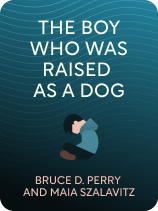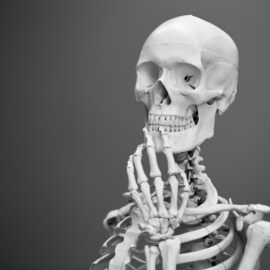

This article is an excerpt from the Shortform book guide to "The Boy Who Was Raised as a Dog" by Bruce D. Perry and Maia Szalavitz. Shortform has the world's best summaries and analyses of books you should be reading.
Like this article? Sign up for a free trial here.
What are the best methods for treating childhood trauma? How can the neurosequential model provide healing and understanding?
Treating childhood trauma requires repetitive, consistent treatments in a safe environment, and it must involve voluntary patient participation. Understanding the neurosequential model of therapeutics and how it informs treatment is a powerful way to understand effective treatment plans.
Read on to learn about this model and how it can be used to understand and treat trauma.
Dr. Bruce Perry’s Neurosequential Model of Therapeutics
One method for treating childhood trauma is Dr. Bruce Perry’s Neurosequential Model of Therapeutics. This model is founded on the premise that neural development must occur in order, and that if a child misses a developmental milestone due to the effects of their environment (such as abuse, neglect, or other trauma), that milestone can’t be “skipped over.” For example, if a child is not spoken to during their early childhood years, they won’t develop the language skills needed to speak or understand others at the same time other children do, and depending on the extent of the deprivation, they may never develop their language faculties at all.
And, since brain development is cumulative, if a milestone is missed, the functions that build on that milestone won’t develop properly either. The brain will still require a specific type of stimulation to develop that foundational function or region. This means that we can’t treat traumatized children based on their chronological age; rather, we must treat them based on their developmental age.
(Shortform note: The psychological term used to describe the state of someone who hasn’t progressed past a certain point in their development is arrested development. Psychologists note that when children experience trauma, it can pause their emotional development in particular. For others, the trauma may also lead to age regression, which is when you achieve a certain level of developmental maturity but then revert back to feelings or behavior from an earlier period. Age regression may occur as an involuntary symptom of arrested development, but it can also be used as a voluntary coping mechanism or therapeutic treatment. For example, a therapist might have someone return to their childhood state of mind to process trauma from that time.)
What Does Effective Therapy Look Like?
Effective trauma therapy must have certain characteristics: It must involve regular, repeated experiences that build on the patient’s existing skills and target their needs; it must take place in a predictable environment in which the patient feels safe; and it must be patient-directed and voluntary.
Therapists drawing on the Neurosequential Model of Therapeutics progress through the following four steps:
- Understand the patient’s history, including the type of trauma they experienced and when they experienced it, as well as the patient’s relationships with others.
- Understand the patient’s current status, including their strengths, needs, and the quality of their relationships with others.
- Create a treatment plan that builds on the patient’s skills and targets their needs.
- Implement the treatment plan and adjust it as needed.
(Shortform note: Even with the best therapist and a plan that includes the steps described here, therapy may not be effective if the patient can’t adhere to the treatment plan. Experts suggest that patients’ ability and willingness to adhere to a therapeutic treatment plan depends on six factors: 1) believing the therapy will work, 2) understanding how the therapy will help them, 3) understanding how to use the plan, 4) having the ability to act when needed, 5) having the resources to act when needed, and 6) having a reward to reinforce the desired behavior and beliefs. Because child therapy may be more adult-directed, adults will need to help facilitate these conditions.)

———End of Preview———
Like what you just read? Read the rest of the world's best book summary and analysis of Bruce D. Perry and Maia Szalavitz's "The Boy Who Was Raised as a Dog" at Shortform.
Here's what you'll find in our full The Boy Who Was Raised as a Dog summary:
- How trauma impacts the developing brains of children
- Case studies of child abuse and neglect, as told by a child psychiatrist
- An explanation of the Neurosequential Model of Therapeutics






